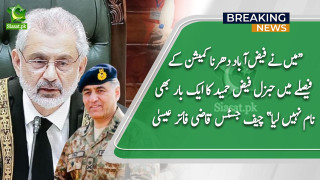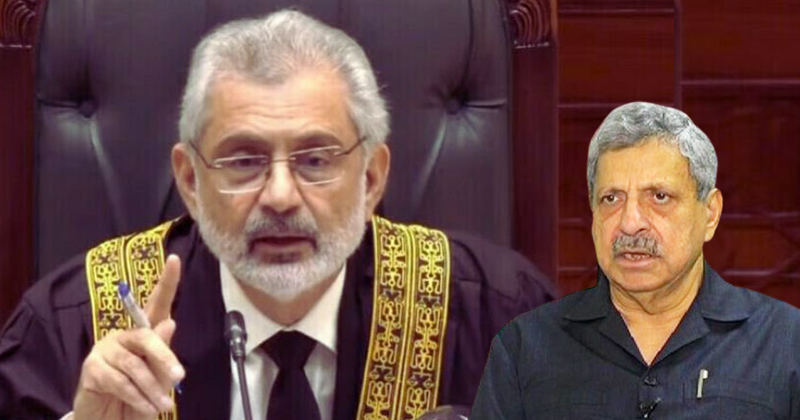When the earthquake hit us on the morning of 8th October 2005, we said that the disaster caught us unaware and unprepared. The mini disasters of Cyclone Yemyin in 2007, the Ziarat earthquake in 2008 and the presently unfolding summer 2010 floods mega disaster suggest that we have learnt nothing as yet.
The National Disaster Management Authority (NDMA) was launched in 2007, with the task to coordinate among its provincial, regional and district-level counterparts. The main responsibility for Disaster Management was deemed as primarily a provincial/local subject, and local chapters were opened, like PDMA in Sindh and KP (NWFP).
NDMAs and PDMAs mandate can perhaps be classified into three categories:
The present devastation, though tragic in consequences and incredibly vast in scale, is not as complex as the 2005 earthquake. There is no lack of baseline information; no national security-related issues of access to the affected areas and no threat of the winter cold looming around the corner. The fear is that after the water recedes, people will undertake spontaneous recovery, recreating the same hazards that devastated them in the first place. The need is to mainstream risk-reduction in the reconstruction process. Another important task to be done is to carry out a post-facto analysis of what acts of omission and commission exacerbated the preventable damage during the current disaster.
The PDMAs basic responsibility, listed in the National Disaster Management Framework is as under;:
The Atta-abad lake issue is fresh in our minds, and still an unfolding tragedy of the year 2010, not a very distant date. The slow response of NDMA was highlighted and deplored at many forums.
Then we see warnings being delivered by the Pakistan Meteorological Department (which must have reached PDMA fat salary officers and officials too). Rains occur in upper Swat, due to which an avalanche occurs in upper swat, very similar to Ata -abad, which stops the flow of water in river Swat for upto two to three days. No warning is sounded and nothing is done to breach that avalanche dam. Then when that blocked water breaches the avalanche Dam, a surge of water rushes through the Swat valley and downstream, wreaking havoc. Who is to blame, besides the feeble and much touted rant of act of nature and will of Allah. Taking fatalism so far is not right, and PDMA atleast cannot take this as an excuse to hide their incompetency and inaction. Drawing big salaries, hiring consultants at exorbitant rates, visiting foreign countries every second month, what does PDMA want further to make it functional and start delivering on their basic role and responsibility.
A punitive inquisition is recommended, but it must be based on technical and objective analysis of the events, by experts who have the requisite expertise. The senior judiciary should take Suo Moto notice and form an inquiry commission. The findings of the technical inquiry should form the basis of a national disaster risk management policy, which would refine the PDMA contingency disaster plans, presently in books and not implemented by the inefficient Officers of the PDMA. Sindh and KP PDMA is basically being used as a fertile ground to provide employment opportunities for the blue eyed sons and wards of the connected and influential people.
The relevant officials need to be hired on merit, and roles and responsibilities spelt out, so that they realize that its their job to respond proactively to Disasters, and not just sit and chair relief meetings after Disasters have occurred.
The least that can be done, without colossal expense to the exchequer, is to improve the information management system so that the hazards, early warnings, capacities, resources and gaps are known to everybody and any preparedness or risk reduction work is done based on the evidence generated from information.
Authority comes with responsibility, and we need to convey this message to all those involved in Disaster Mitigation. They have to take their job seriously. Criminal neglect of duties, once punished in open, is the only way we can deliver this message loud and clear. We as a nation, and affectees of that inaction, have a right to demand action against those responsible.
The National Disaster Management Authority (NDMA) was launched in 2007, with the task to coordinate among its provincial, regional and district-level counterparts. The main responsibility for Disaster Management was deemed as primarily a provincial/local subject, and local chapters were opened, like PDMA in Sindh and KP (NWFP).
NDMAs and PDMAs mandate can perhaps be classified into three categories:
- Mainstreaming risk-reduction in development programs,
- Overseeing contingency planning,
- And coordinating response to disasters.
The present devastation, though tragic in consequences and incredibly vast in scale, is not as complex as the 2005 earthquake. There is no lack of baseline information; no national security-related issues of access to the affected areas and no threat of the winter cold looming around the corner. The fear is that after the water recedes, people will undertake spontaneous recovery, recreating the same hazards that devastated them in the first place. The need is to mainstream risk-reduction in the reconstruction process. Another important task to be done is to carry out a post-facto analysis of what acts of omission and commission exacerbated the preventable damage during the current disaster.
The PDMAs basic responsibility, listed in the National Disaster Management Framework is as under;:
- Institutional and Legal Arrangements. Provincial Disaster Management Authorities were established in 2007, with their ancilliary coordination arrangements within the Provincial departments, and at the District levels.
- National Hazard and Vulnerability Assessment was their second role, and huge funds were spent on these studies.
- Training, Education and Awareness. Many workshops and seminars were funded under this head. Many foreign visits were made by the PDMA senior management.
- Promoting Disaster Risk Management Planning. All Provincial Departments in NWFP (KP) were involved in such exercises by a GTZ Disaster related initiative, and Contingency Plans were developed in 2007 to 2009, for each Department and many Districts even.
- Community and Local Level Risk Reduction Programming.
- Multi-hazard Early Warning System. Early warning systems were supposed to be established, as the main role of PDMA was early warning, and people had to be warned of any imminent danger or hazard. This was not done by the incompetent bureaucratic paper pushing officers and officials of the PDMA.
- Mainstreaming Disaster Risk Reduction into Development. This is part of the role of the FFC (Federal Flood Commission), Irrigation Department and WAPDA, and the PDMA formation has brought the main role over to PDMA to keep a close liaison with all these agencies.
- Emergency Response System. The Emergency response system was supposed to be there, instead of the very crude control room of PDMA KP, which is just meant for presentations and reporting, established and made operational only after the Disaster has struck.
- Capacity Development for Post Disaster Recovery
The Atta-abad lake issue is fresh in our minds, and still an unfolding tragedy of the year 2010, not a very distant date. The slow response of NDMA was highlighted and deplored at many forums.
Then we see warnings being delivered by the Pakistan Meteorological Department (which must have reached PDMA fat salary officers and officials too). Rains occur in upper Swat, due to which an avalanche occurs in upper swat, very similar to Ata -abad, which stops the flow of water in river Swat for upto two to three days. No warning is sounded and nothing is done to breach that avalanche dam. Then when that blocked water breaches the avalanche Dam, a surge of water rushes through the Swat valley and downstream, wreaking havoc. Who is to blame, besides the feeble and much touted rant of act of nature and will of Allah. Taking fatalism so far is not right, and PDMA atleast cannot take this as an excuse to hide their incompetency and inaction. Drawing big salaries, hiring consultants at exorbitant rates, visiting foreign countries every second month, what does PDMA want further to make it functional and start delivering on their basic role and responsibility.
A punitive inquisition is recommended, but it must be based on technical and objective analysis of the events, by experts who have the requisite expertise. The senior judiciary should take Suo Moto notice and form an inquiry commission. The findings of the technical inquiry should form the basis of a national disaster risk management policy, which would refine the PDMA contingency disaster plans, presently in books and not implemented by the inefficient Officers of the PDMA. Sindh and KP PDMA is basically being used as a fertile ground to provide employment opportunities for the blue eyed sons and wards of the connected and influential people.
The relevant officials need to be hired on merit, and roles and responsibilities spelt out, so that they realize that its their job to respond proactively to Disasters, and not just sit and chair relief meetings after Disasters have occurred.
The least that can be done, without colossal expense to the exchequer, is to improve the information management system so that the hazards, early warnings, capacities, resources and gaps are known to everybody and any preparedness or risk reduction work is done based on the evidence generated from information.
Authority comes with responsibility, and we need to convey this message to all those involved in Disaster Mitigation. They have to take their job seriously. Criminal neglect of duties, once punished in open, is the only way we can deliver this message loud and clear. We as a nation, and affectees of that inaction, have a right to demand action against those responsible.

































